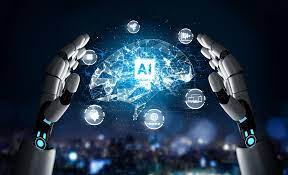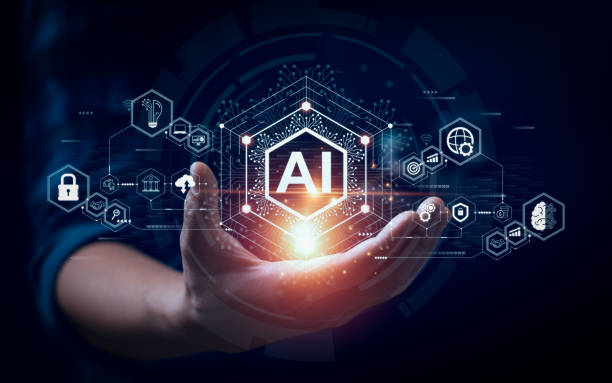AI is becoming a vital part of our everyday lives, from virtual assistants like Siri and Google Assistant Artificial Intelligence to self-driving cars and ride-sharing apps. It has made businesses smarter and more efficient by automating and optimizing various processes, including data analysis and customer service.
With the help of AI subsets, especially machine learning and deep learning, AI is paving the way for developing more innovative and intelligent solutions that can learn from a huge amount of data, identify patterns, and make predictions with exceptional accuracy.
Even with its widespread use, many people still lack a thorough understanding of artificial intelligence and its workings. This article aims to give a comprehensive guide to understanding artificial intelligence (AI) and how it affects us daily. This article is a must-read for anyone looking to understand AI better or a business owner exploring its possibilities.

Table of Contents
What is Artificial Intelligence?
Artificial Intelligence (AI) is a broad branch of computer science that aims to create systems that can function intelligently and independently, just like humans. It can imitate human-like intelligence processes, like learning, reasoning, and self-correction.
Artificial Intelligence
Systems developed using AI are designed to process information, learn from experience, and adapt to changing circumstances. Specific AI applications include machine vision, speech recognition, and expert systems.
After understanding artificial intelligence, you need to know how it works and the components that make machines work intelligently.
Artificial Intelligence: What is AI? A Beginner’s Guide to Artificial Intelligence (2023)
What is AGI in AI?

To best understand AGI, first consider the current AI, Narrow AI, and consider that AGI is still theoretical. So, our expectations for AGI illustrate what current AI still cannot do.
Narrow AI: focuses on performing a single task extremely well, such as playing chess, translating languages, or recognizing images. Narrow AI is considered weak because it can only perform within specific parameters. This type of AI exists today and can outperform humans in many tasks.
Artificial Intelligence: What is AI? A Beginner’s Guide to Artificial Intelligence (2023)
Artificial General Intelligence (AGI) is a hypothetical AI system exhibiting human-level intelligence and capabilities across various domains. This type of versatile AI is theorized to be able to adapt to changing surroundings and conditions and be as effective as humans in problem-solving. AGI is yet to exist. To learn and think like a human, AGI would require self-awareness and consciousness, which raises an entire field of ethical questions. We need significant leaps in AGI (and ethical maturity as a collection of societies) before Star Trek’s Data or Iron Man’s Jarvis becomes a reality.
Subfields of Artificial Intelligence
AI has several subfields, the prominent of which are:
Machine Learning (ML):
This subfield of AI aims to develop algorithms that enable machines to learn from data without explicit programming. Due to the rise of big data and the need to process and make sense of vast amounts of information, machine learning has become increasingly important in recent years. ML, in itself, has multiple subfields, like deep learning and supervised and unsupervised learning.
Natural Language Processing (NLP):
Natural language processing aims to teach machines to understand and generate human language. Speech recognition, language translation, and text analysis are some methods used in NLP.
Expert Systems:
In contrast to conventional procedural code, expert systems solve problems in a specific domain by reasoning about knowledge, primarily represented as ‘if-then’ rules. It refers to machines mimicking a human expert’s decision-making intelligence.
Robotics:

As a field of study, robotics focuses on designing, developing, and programming robots that interact with the external environment, just like humans. The field of robotics brings together knowledge from mechanical, electrical, and computer engineering.
Computer Vision:
Computer vision aims to teach machines to interpret and understand visual data. It includes tasks such as object recognition, facial recognition, and image and video analysis.
Neural Networks:
In areas such as image recognition and speech recognition, these models are used to model complex relationships between inputs and outputs.
Now that we know about artificial intelligence and its subfields, let us understand how they are related to the human brain.
The working mechanism of AI and its fascinating connection with the human brain

Understanding artificial intelligence is not enough until you know how it works. But don’t worry; we’ve got your back.
Artificial Intelligence: What is AI? A Beginner’s Guide to Artificial Intelligence (2023)
Artificial intelligence tries to replicate how the human brain works, and one way it does that is through neural networks. If we use more complex networks to learn complicated things, that’s called deep learning. There are different types of deep learning, and they use fundamentally different techniques to replicate what the human brain does. For example, convolutional neural networks (CNN) are used to recognize objects in a scene, and this is how computer vision works for object recognition in AI.
To teach machines how to learn, we use machine learning. We feed machines lots of data to see patterns and make predictions based on what it has learned. Machines can learn in many more aspects than humans, like even a hundred or thousands, enabling them to look at many high-dimensional data and determine patterns. We can use these machine learning techniques to do two things: classify or predict. If you assign new customers to a group based on some information about customers, you’re classifying them. If you predict whether they’re likely to defect to a competitor based on data, you’re making a prediction.
AI development uses certain learning algorithms to make machines smarter. We can create better AI systems by understanding how different learning algorithms perform.
Learning algorithms are used to make machines Artificially Intelligent.
Although numerous learning algorithms exist to make machines highly intelligent, the prominent ones are the following:
Supervised Learning:

If you train an algorithm with a labeled dataset, which means the data already contains the right answers, then it’s called supervised learning. For instance, when you train a machine to recognize your friends by name, you must identify them for the computer. In supervised learning, once the data is fed to the algorithm, it is trained to determine the connection between the input features and its correct output. After training the algorithm, it can make predictions based on new data. Examples of supervised learning include image recognition, spam filtering, and speech recognition.
Unsupervised Learning:
If you train an algorithm with data where you want the machine to figure out the patterns in the data, then it’s unsupervised learning. For example, you could feed the data about celestial objects in the universe and expect the machine to create patterns in that data by itself. In this type of learning, the dataset used is unlabeled, meaning it has no predefined labels or categories. Once fed with the data, the algorithm must find patterns or structures independently. Unsupervised learning applications include clustering and anomaly detection.
Reinforcement Learning:

If you give any algorithm a goal and expect the machine, through trial and error, to achieve that goal, then it’s called reinforcement learning. A robot’s attempt to climb over the wall until it succeeds is an example of that. In this, the algorithms interact with an environment and receive feedback as rewards or punishments regarding their behavior. The algorithm uses this feedback to improve its decision-making process.
Final Thoughts:
As we have seen, artificial intelligence has evolved rapidly since its inception, and there are no limits to its potential. It can reconstruct businesses and unimaginably shape the future by using its innovative features like natural language processing, machine learning, image processing, and robotic process automation. By adopting the right approach, AI development can revolutionize industries and transform how we live and work. With AI on the verge of reshaping our world for years to come, it is clear that we are undertaking an exciting journey of discovery and innovation.

